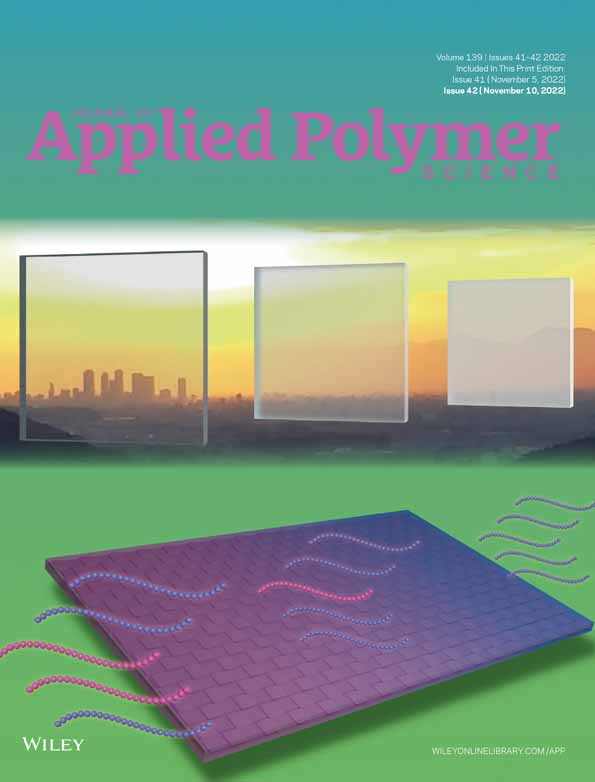Effect of ionic liquid modified carbon nanotubes on the properties of nitrile butadiene rubber and nitrile butadiene latex nanocomposites
Abstract
Multiwalled carbon nanotubes (MWCNT) were widely used in nano-polymer materials due to their excellent electrical and thermal conductivity and mechanical properties. However, the dispersion of MWCNT in the rubber matrix was usually poor due to their large aspect ratio and tendency to agglomerate. The main innovation of this technology was that the non-covalent modification did not destroy the surface structure and original properties of MWCNT, which was a breakthrough compared to the previous covalent modification. The obtained IL-MWCNT was still distributed in the water a month after sonication. The microstructural development of the filled network and the uniform dispersion of MWCNT in the presence of IL were analyzed by TEM. The apparent physical (cation–π/π–π) interactions between MWCNT and IL were characterized by Raman spectroscopy and thermal gravimetric analysis (TGA). The high-performance composites of IL-MWCNT and nitrile butadiene rubber (NBR) or nitrile butadiene rubber latex (NBRL) were prepared by the liquid latex blending method. The mechanical properties of the composites were improved due to the uniform distribution of IL-MWCNT in the matrix. As found in this work, the addition of 3 phr of IL increased the mechanical properties of the composites significantly. The continued addition of IL affects the dispersion of MWCNT in the composites due to the plasticizing and diluting effects of IL, which results in a decrease in the mechanical properties. This study provides a simple, environmentally friendly method for the development of IL-MWCNT composites.
Open Research
DATA AVAILABILITY STATEMENT
The data that support the findings of this study are available in the supplementary material of this article.




